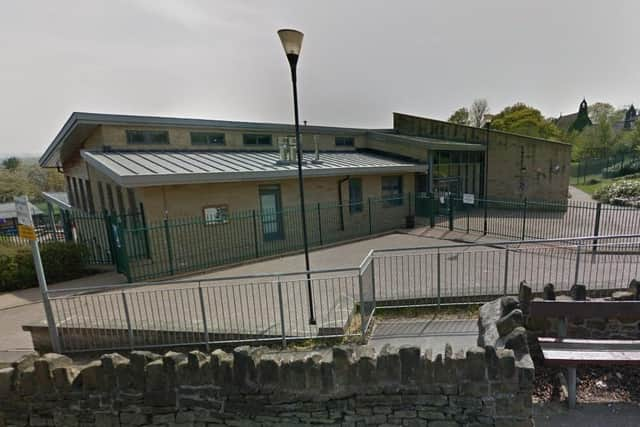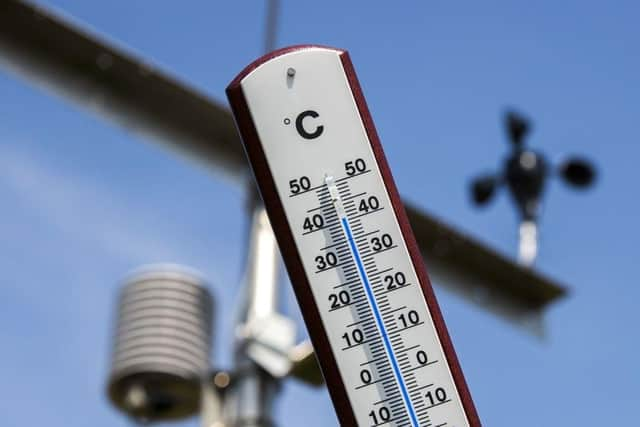Grenoside Primary School in Sheffield closing for two days due to heat - this is the safety advice to schools
and live on Freeview channel 276
Grenoside Community Primary School said it would be closed on Monday, July 18 and Tuesday, July 19, when record-breaking temperatures are forecast.
A message on its website states: “We have taken the decision to close the school on Monday and Tuesday due to the combination of the red weather warning for extreme heat and the school site being unsafe.


Advertisement
Hide AdAdvertisement
Hide Ad“The school will reopen on Wednesday, July 20 as normal. We apologise for any inconvenience caused.”
How hot is it expected to get in Sheffield, and will the record temperature be beaten?
The Met Office has issued an amber weather warning for extreme heat in Sheffield, running throughout Sunday, Monday and Tuesday, and there is a red ‘danger to life’ alert for Monday and Tuesday covering other parts of South Yorkshire.
The Met Office forecasts temperatures will reach 31C on Sunday, 34C on Monday and 37C on Tuesday. The BBC is forecasting a high for Sheffield of 41C on Monday and 39C on Tuesday.


The highest temperature ever recorded in Sheffield was 35.6C on July 25, 2019, and the UK all-time record is 38.7C in Cambridge on the same date.
Are other schools in Sheffield closing because of the heat?
Advertisement
Hide AdAdvertisement
Hide AdThe Star is not currently aware of any other school closures, and Sheffield Council has not said that widespread closures are likely.
Other schools have said they will remain open with measures in place for the safety of pupils and staff.


Handsworth Grange Community College said students would be allowed to wear their PE kits on the Monday and Tuesday, classes would be moved into rooms with air conditioning and good ventilation, and there would be an afternoon drinks break.
Sheffield heatwave: Bin collections affected by record-breaking heatwave, as advice is issued to residents
Ecclesfield School has also said students can wear their PE uniforms and asked parents to ensure their childrn have water, sun cream and a hat if they are to be outside.
Advertisement
Hide AdAdvertisement
Hide AdStocksbridge High School has also said pupils can wear their PE kits, and it has cancelled its sports day, which was scheduled for Monday.
The Department for Education says: “During heatwaves it’s important that everyone stays safe and makes sure they drink plenty of water and avoids being exposed to the sun for too long – this is especially important for children.
“We aren’t advising schools to close during high temperatures, but school leaders should make sure they take any steps necessary to make sure children are safe and comfortable.”
What is the advice to schools during the heatwave? Is 40C heat dangerous?
The Department of Health & Social Care has issued guidance to schools which states that children are at greater risk of ill health from extreme than adults because they cannot control their body temperature as efficiently since they do not sweat as much.
Advertisement
Hide AdAdvertisement
Hide AdIt states: “Heat- related illness can range from mild heat stress to potentially life-threatening heatstroke. The main risk from heat is dehydration (not having enough water in the body).
“If sensible precautions are taken children are unlikely to be adversely affected by hot conditions, however, teachers, assistants, school nurses and all child carers should look out for signs of heat stress, heat exhaustion and heatstroke.”
While it does not recommend closure, it says that if necessary, schools should consider rearranging their start, finish and play times to avoid teaching during very hot conditions.
What are the warning signs of heat stress, heat exhaustion and heatstroke?
HEAT STRESS
Children suffering from heat stress may seem out of character or show signs of discomfort and irritability (including those listed below for heat exhaustion). These signs will worsen with physical activity and if left untreated can lead to heat exhaustion or heatstroke.
HEAT EXHAUSTION
Advertisement
Hide AdAdvertisement
Hide AdSymptoms of heat exhaustion vary but include one or more of the following:
tiredness
dizziness
headache
nausea
vomiting
hot, red and dry skin
confusion
HEATSTROKE
When the body is exposed to very high temperatures, the mechanism that controls body temperature may stop working. Heatstroke can develop if heat stress or heat exhaustion is left untreated, but it can also occur suddenly and without warning.
Symptoms of heatstroke may include:
high body temperature – a temperature of or above 40°C (104°F) is a major sign of heatstroke
red, hot skin and sweating that then suddenly stops
fast heartbeat
fast shallow breathing
confusion/lack of co-ordination
fits
loss of consciousness
What should you do if a child is suffering from heat illness?
The Department of Health & Social Care says that if a child is suffering from heat illness, the following steps to reduce body temperature should be taken immediately:
Advertisement
Hide AdAdvertisement
Hide AdMove the child to as cool a room as possible and encourage them to drink cool water (such as water from a cold tap).
Cool the child as rapidly as possible, using whatever methods you can. For example, sponge or spray the child with cool (25 to 30°C) water – if available, place cold packs around the neck and armpits, or wrap the child in a cool, wet sheet and assist cooling with a fan.
Dial 999 to request an ambulance if the person doesn’t respond to the above treatment within 30 minutes.
If a child loses consciousness, or has a fit, place the child in the recovery position, call 999 immediately and follow the steps above until medical assistance arrives.
What steps can be taken to protect children outdoors during extreme heat?
Advertisement
Hide AdAdvertisement
Hide Adchildren should not take part in vigorous physical activity on very hot days, such as when temperatures are in excess of 30°C
encourage children playing outdoors to stay in the shade as much as possible
children should wear loose, light-coloured clothing to help keep cool and sunhats with wide brims to avoid sunburn
use sunscreen (at least factor 15 with UVA protection) to protect skin if children are playing or taking lessons outdoors for more than 20 minutes
Advertisement
Hide AdAdvertisement
Hide Adprovide children with plenty of water (such as water from a cold tap) and encourage them to drink more than usual when conditions are hot
What steps can be taken to protect children outdoors during extreme heat?
open windows as early as possible in the morning before children arrive, or preferably overnight to allow stored heat to escape from the building – it is important to check insurance conditions and the need for security if windows are to be left open overnight
almost close windows when the outdoor air becomes warmer than the air indoors – this should help keep the heat out while allowing adequate ventilation
use outdoor sun awnings if available, or close indoor blinds or curtains, but do not let them block window ventilation
keep the use of electric lighting to a minimum
Advertisement
Hide AdAdvertisement
Hide Adswitch off all electrical equipment, including computers, monitors and printers when not in use – equipment should not be left in ‘standby mode’ as this generates heat
if possible, use those classrooms or other spaces which are less likely to overheat, and adjust the layout of teaching spaces to avoid direct sunlight on children
oscillating mechanical fans can be used to increase air movement if temperatures are below 35°C – at temperatures above 35°C fans may not prevent heat-related illness and may worsen dehydration
if necessary, consider rearranging school start, finish, and play times to avoid teaching during very hot conditions
encourage children to eat normally and drink plenty of cool water.
